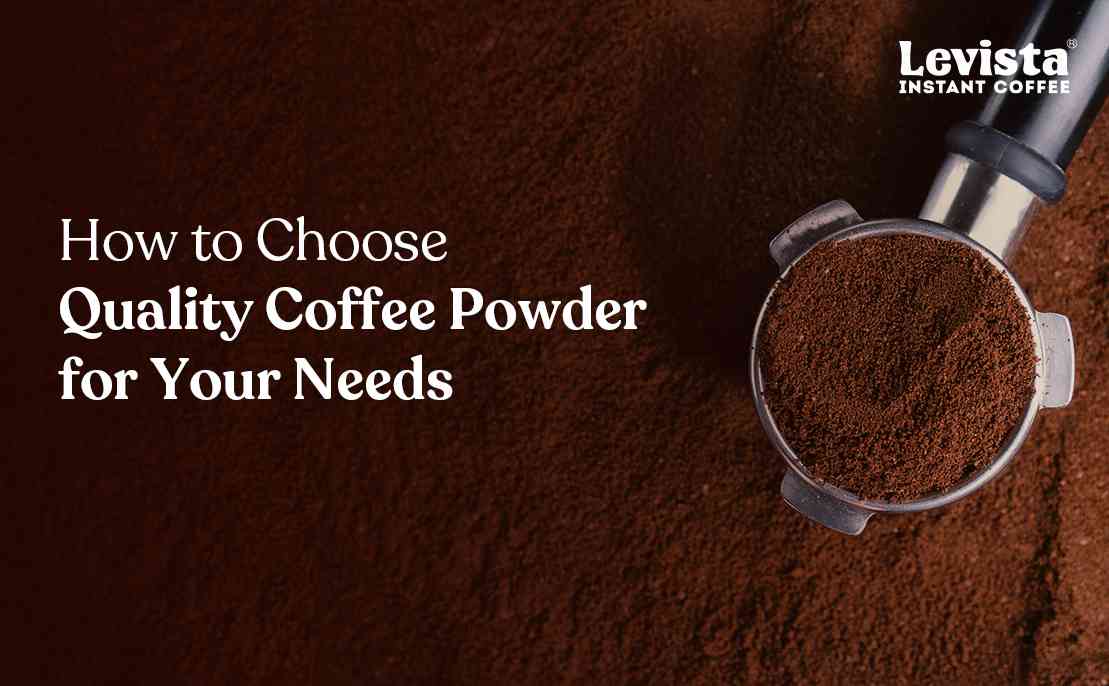
May 23 , 2025
Begin with Your Preferred Brewing Method
Your brewing equipment should influence the type of coffee powder you buy. Filter coffee requires a medium to coarse grind. Espresso machines need a finer texture. French press and pour-over methods demand specific grind sizes, too. Using the wrong grind can lead to poor extraction, affecting taste.
Understand the Roast Profile
Roast levels determine flavour, aroma, and strength. Light roasts offer bright, acidic notes and retain more of the bean's original profile. Medium roasts provide balance—mild acidity, full body, and more developed flavour. Dark roasts deliver boldness and lower acidity, often suited for milk-based drinks.
If you prefer a strong, fuller flavour, look for medium to dark roasts. For a more delicate and fruity cup, light roasts are a better match. Choose based on your flavour preference, not just what’s most commonly available.
Evaluate the Grind Size
Grind consistency matters. Too fine, and the coffee can taste bitter. Too coarse, and it becomes weak or under-extracted. Quality coffee powder should match your method’s requirement and remain consistent in texture throughout the pack. Always verify this before purchase.
Check Packaging for Freshness
Coffee loses its flavour and aroma quickly if not stored properly. Quality brands use vacuum-sealed or nitrogen-flushed packaging. Always check roast or packing dates—freshness matters far more than shelf life. Avoid products without a clear roast date.
Consider the Origin and Processing
The origin of the beans influences flavour. Beans from different regions carry distinct profiles—fruity, nutty, earthy, or floral. Washed beans tend to be cleaner in taste, while naturally processed ones may be fruitier and more intense. Consider exploring single-origin powders to find a profile you enjoy.
Pay Attention to Blends vs. Single Origin
Blends combine beans from multiple regions to create a balanced cup. They’re usually consistent and reliable. Single-origin coffee highlights the unique characteristics of one region or estate. Choose blends if you want familiarity; go with single origin if you're curious about nuanced flavours.
Test in Small Quantities First
Avoid buying in bulk initially. Try small packs from different sources to compare flavour, texture, and freshness. Once you find one that consistently meets your expectations, you can consider purchasing in larger amounts.
Storage Practices at Home
Once opened, transfer the powder into an airtight container. Keep it in a cool, dry place away from sunlight and heat. Avoid refrigeration, as it introduces moisture. Proper storage can extend the coffee’s life and preserve its qualities.
Brewing Excellence in Every Cup
At Levista Coffee, we are dedicated to delivering an authentic coffee experience rooted in tradition and quality. Sourced from our own estates in Coorg, our beans undergo meticulous processing to ensure every cup embodies richness and consistency. Our commitment extends beyond just coffee; it's about fostering connections and moments over a perfectly brewed cup.
Final Thoughts
Quality coffee powder aligns with your taste, brewing method, and preference for strength and flavour. There's no universal best—only what best fits your daily routine. With attention to detail and a bit of trial, you’ll find a blend that works for you every time.
FAQs
1. What defines quality coffee powder?
Quality coffee powder reflects proper roasting, consistent grinding, and freshness. It should suit your brewing method, offer a flavour profile that matches your preference, and come in packaging that maintains its aroma and taste from production to cup.
2. How does grind size impact flavour?
Grind size determines how effectively coffee extracts during brewing. Too fine results in bitterness, while too coarse may taste flat or weak. Matching grind to your brewing method ensures optimal flavour, clarity, and balance in every cup you prepare.
3. What’s the difference between light, medium, and dark roasts?
Light roasts preserve acidity and delicate notes. Medium roasts offer balanced flavour and mild body. Dark roasts produce a bolder taste with reduced acidity. Your preference should guide the roast you choose, especially based on how you enjoy your coffee.
4. Should I choose a single origin or a blend?
Single origin coffee highlights unique regional characteristics. It’s ideal for those seeking specific flavour notes. Blends offer a balanced, consistent profile and are often crafted for everyday use. The right choice depends on your taste and brewing routine.
5. Does packaging affect coffee freshness?
Yes. Freshness declines rapidly without proper packaging. Vacuum-sealed or nitrogen-flushed packs help preserve flavour and aroma. Always check the roast or packing date, and avoid products lacking clear freshness information or stored in unsealed, non-airtight materials.

